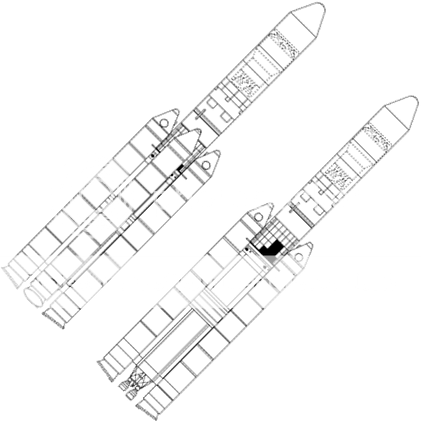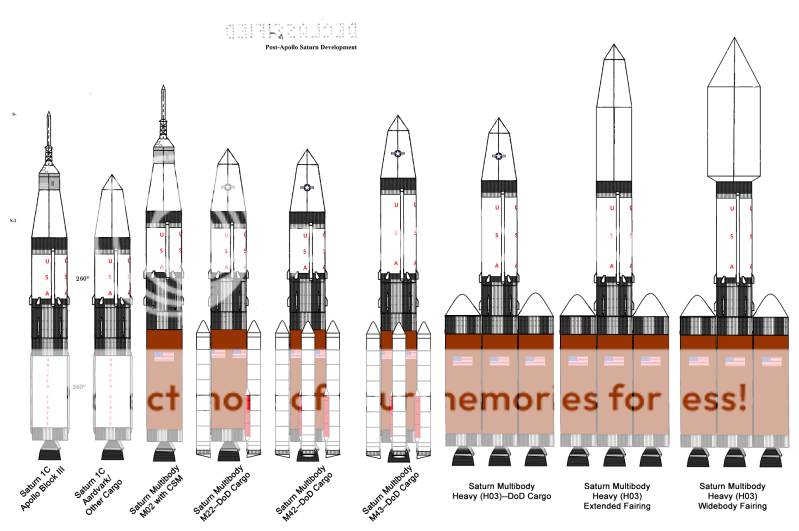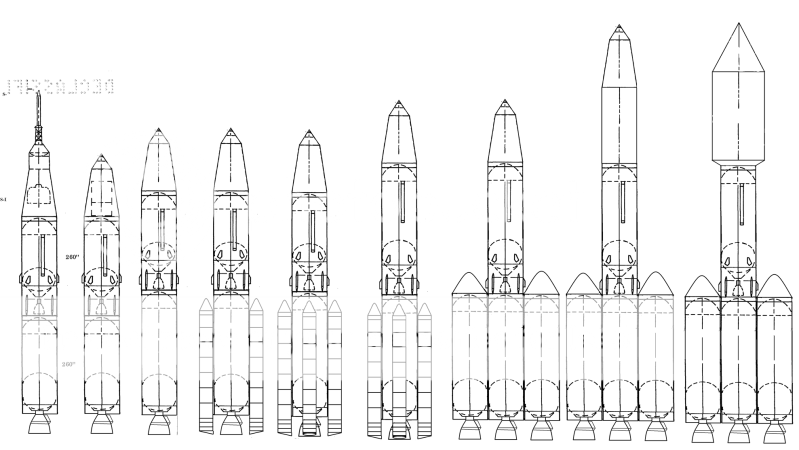All right! It's that time again to pop in and let you know that once again, work has somehow interfered with posting a new update on the usual Wednesday timeslot. However, this week it's good(ish) news for you! To avoid having to post this after I get off work, and thus rather late tomorrow, it's going up now, so it's early instead of late. Hope you all don't mind too much.
Eyes Turned Skyward Post #22:
NASA’s addition to the ELVRP II contract process only heightened the stakes of what was already a very competitive game. Many companies had put in contracts for ELVRP II, fearing that with Delta 4000 already slated to take care of a substantial portion of the military launch market and the ELVRP II now intended to fill almost all of the rest, a loss in the ELVRP II bidding could result in getting shut out of the only game in town. McDonnell Douglas was a notable exception, as the Delta 4000 program was consuming most of the company’s attention. In addition, already having won ELVRP I made winning ELVRP II less do-or-die, and thus they were less concerned with winning ELVRP II than with securing what they already had. Of the rest, two bids in particular stood out from the rest of the pack; Martin-Marietta and Boeing had put forward concepts that attracted significant DoD and NASA attention, building on history, lessons learned from ELVRP I, and the latest thinking in launch vehicle design.
Martin-Marietta had been hurt in ELVRP I by seeming to lack an understanding of the flexibility the Air Force wanted. Their ELVRP II proposal, drawing on a 1965 proposals for Titan III successor called the Titan 3L, gave the Air Force as many options as Martin’s engineers could dream up. The original 1965 plan had called for an enlarged 15-foot core stage, powered by four of the same LR-87 engines that powered the Titan III, combined with either two or four 7-segment solid rocket boosters. This gave the original concept the option of delivering either 35 or 45 tons to a 185 km orbit. In the revised ELVRP II version, Martin’s engineers went a step further, calling for the vehicle to be designed to also accept Titan III-derived 5-segment boosters, with two dummy segments to allow them to swap out in pairs for the 7-segment boosters. This allowed for a total of five configurations. By mixing and matching one or two pairs of solid rocket boosters, the same core could launch 18, 24, 35, 40, or 45 tons to a 185 km circular orbit.
Martin Marietta Titan-derived ELVRP II Proposal
Boeing, having been burned in ELVRP I with the clean-sheet nature of their Neptune proposal, drew upon their experience with Saturn 1C, as well as past studies on improving the Saturn 1B and the work of engineers of the ESA. Boeing proposed its initial design as a re-working of a Saturn evolution concept studied by Chrysler during studies in the heyday of the Apollo Applications Program, the INT-11. This proposed a 20-ft stretch of the Saturn 1B first stage and modifications to allow two pairs of Titan 7-segment solids to be attached. Boeing combined this concept with one of the concepts the ESA had considered for the Europa 3, which proposed redesigning the Blue Streak first stage to be able to hold two additional first stages as boosters, potentially giving nearly triple the capability while distributing construction costs across a greater number of common cores. Synthesizing these with the available Saturn 1C core, Boeing proposed to meet ELVRP II’s requirements of a 20-45 ton capacity by giving the Saturn 1C first stage a similar 20 ft stretch as the proposed INT-11, but with the capability to launch with 0, 2, or 4 Titan 7-segment solids, offering capabilities from 26 to 48 metric tons to orbit. Additionally, the ability to go for a triple-body “heavy” combined with a stretched SIVB-based third stage would offer a maximum payload of 77 tons—far beyond that of the Marietta proposal, and more than sufficient even for future stations using modules the size of Skylab or Spacelab. To emphasize the tremendous variability and versatility of their design, Boeing called their proposal Saturn Multibody.
Saturn 1C and Boeing's ELVRP II proposal, Saturn Multibody
Each of these proposals offered advantages. The Boeing multicore rocket offered far greater maximum payload size than the Martin proposal, exceeding the requirements by more than 30%. It also used cleaner core-stage fuels (kerosene and liquid oxygen) as opposed to the toxic hypergolics characteristic of the Titan family. Additionally, much of the tooling created for Saturn 1C could be reused, reducing development time and cost. The Martin Titan-derived proposal could not offer this. However, the DoD felt greater (and perhaps misplaced) confidence in the Titan designers ability to meet schedule and cost goals, and Boeing’s additional development work for what they considered an unnecessary payload range (70+ tons) was initially a hard sell.
In the end, the decision came down to two factors. The first was the political game between the Air Force and NASA. NASA had an overall positive experience working with Boeing on the Saturn 1C, and the Boeing ELVRP proposal had advantages in payload and man-rating potential with its less-toxic fuels and use of already man-rated F1 engines. However, the Air Force had a long history with Martin and the Titan family, and for their purposes the greater flexibility of Martin’s design over their range of interest (20-45 tons) initially more than made up for its lower maximum payload mass, since there were few planned missions likely to use this upper limit in Air Force manifests. However, in the end, the Air Force changed its mind in a rapid turnaround. The reasons were heavily classified at the time, but what would emerge in time was that the United Sates was not the only nation developing new vehicles. Intelligence images from the Kazakh SSR showed that Soviet scientists were producing a rocket whose capability would exceed that of the Titan-derived Marietta proposal. Suddenly, the greater top range of the Boeing “Saturn Multibody” went from a useless luxury to a potential strategic necessity—whatever use the Soviets were planning for their large booster, the Americans wanted to be able to match.
Unaware of the precise reasons for the DoD’s change of heart but unwilling to look a gift horse in the mouth, NASA began work to adapt their studies for a potential Spacelab follow-up station for the late 80s to the greater capability of the Saturn Multibody. However, within two years, Soviet announcements would force these plans to the forefront and kick the second space race into high gear.


